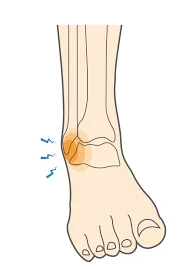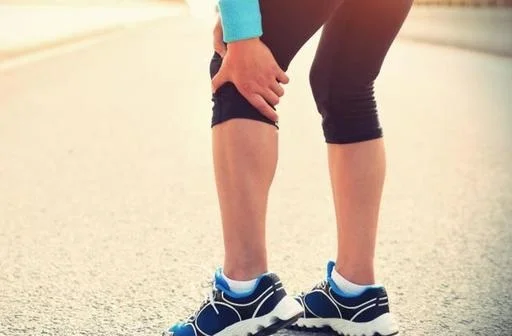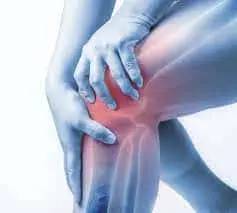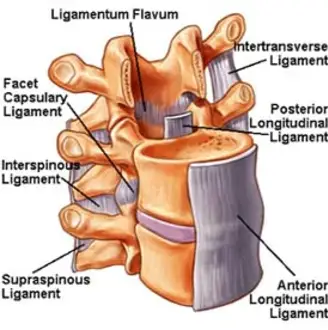Lateral Ankle Sprain
What is a Lateral Ankle Sprain?
A lateral ankle sprain occurs when the ligaments on the outer side of the ankle are overstretched or torn, typically due to a sudden twist, roll, or damage. It is one of the most common musculoskeletal injuries, often seen in sports or activities involving quick changes in direction.
Ankle complex’s lateral ligament sprain is one of the most frequent injuries in the body, occurring in 83% of cases during athletic activity such as football.
This primarily happens when a person is positioned in an excessively inverted position, causing the foot to rotate internally while forcing the leg to rotate externally. The ligament most exposed to this injury is believed to be the anterior talofibula.
The ankle joint comprises several ligaments and muscles that cooperate to provide strength, flexibility, stability, and mobility. It is composed of two different kinds of ligaments: medial (inside) collateral ligaments and lateral (outside) collateral ligaments.
The lateral ankle ligaments are particularly exposed to damage because of the range of motion at the ankle joint during exercise, even though the ankle ligaments are healthy fibrous bands. The anterior talofibular ligament, calcaneofibular ligament, and posterior talofibular ligament are the particular ligaments that may be impacted. Since the anterior talofibular ligament is said to be the weakest of the three, it is frequently the one that sustains damage.
The extent of an ankle sprain is determined by the extent of ligament damage.
Ankle Anatomy:
The three main joints of the ankle complex are the talocrural, subtalar, and distal tibiofibular joints. Known as a hinge joint, the talocrural joint may move in plantarflexion, dorsiflexion, inversion, and eversion. However, eversion motions are limited because the fibula is positioned superiorly towards the lateral malleolus in contrast to the tibia with the medial malleolus. For this reason, the lateral ankle complex may be more susceptible to inversion injuries.
Why do Lateral Ankle Sprains Occur?
Anyone can sustain a lateral ankle sprain. An unexpected twisting, turning, or rolling of the ankle to one side is typically the cause of this injury. Stepping on uneven terrain or walking might result in a lateral ankle sprain. Sprains typically occur during athletic play, particularly in sports that entail unexpected changes of direction and running.
The most common sports causing lateral ankle sprains are:
- Soccer
- Tennis
- Football
- Trail running
- Basketball
- Volleyball
A Lateral Ankle Sprain’s Signs and Symptoms:
A history of “rolling” the ankle inwards, such as when you miss a step or land awkwardly.
- Pains and ankle and foot instability are experienced.
- Swelling and/or bruises on the outside of the ankle.
- Tenderness around the outside of the ankle.
- Difficulty in walking.
- Difficulty in standing on the affected foot.
How Can a Lateral Ankle Sprain Be Diagnosed?
Ankle complex injuries are categorized into grades I through III to differentiate between the degree of ligamentous damage and sprain indisposition. Two forms of dysfunction are associated with lateral ankle injuries: mechanical instability and functional instability.
Acute injury is affected by both of these elements, indicating that chronic ankle instability may occur soon after a lateral ankle injury. The mechanical instability that results from improperly repaired ligaments in the ankle area and impacted joint laxity may be the cause of the occurrence of CAI.
Certain tests can also be used to identify a lateral ankle sprain:
- The Anterior Draw test: Tests the ATFL
- Talar tilt test: Tests the CFL
- Posterior Draw test: Tests the PTFL
Treatments for Lateral Ankle Sprain:
Non-surgical therapy:
Even severe cases of lateral ankle sprains are typically cured without surgery. Rest and weight from your ankle are typically part of the treatment. Conservative therapies also consist of:
- Ice
- Elevation
- Use a bandage to compress for stability.
- Ibuprofen and naproxen are examples of nonsteroidal anti-inflammatory medicines (NSAIDs) that are used to treat pain.
- Crutches.
- Putting on a customized ankle cast or brace to support and prevent re-injury.
- Physical therapy exercises
Suitable Exercises for Ankle Sprain:
Ankle Dorsiflexion
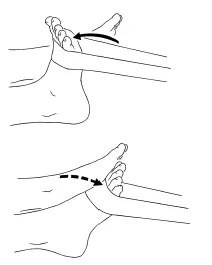
- Put yourself on the floor and begin by sitting down.
- Make your knee straight.
- Focus on your ankle as you raise your foot back up to your nose.
- Adjust the tilt back till it is comfortable.
- Maintain this posture for a little while.
- After that, return to your neutral position.
- Then relax.
- Five to ten times, repeat this exercise.
Ankle Plantarflexion
- Sit down on the ground to start.
- Straighten your knee.
- Simply shift your ankle, then take a step forward.
- Push it back till it feels comfortable.
- Maintain this posture for a little while.
- Return to your neutral position after that.
- Then relax.
- Repeat this exercise 5 to 10 times.
Inversion and Eversion
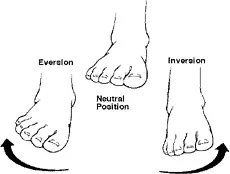
For eversion,
- Put your injured foot firmly on the floor to begin this exercise.
- Step back to your starting position after moving the outside of your foot and the tips of your toes.
- To prevent overreacting, make sure your leg’s motion is different from your foot’s and ankle’s.
- Return to your neutral position after that.
- Then relax.
- Repeat this exercise 5 to 10 times.
For inversion,
- Place your affected foot firmly on the floor to start this exercise.
- The inside edge of your foot should be moved toward the center of your body to complete the ankle inversion.
- Then, shift them again.
- Return to your neutral position after that.
- Then relax.
- Five to ten times, repeat this exercise.
Single-leg Balance
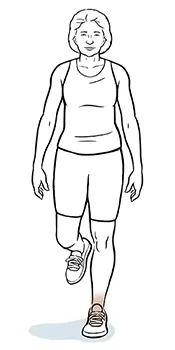
- You can support yourself by holding onto a chair or countertop if needed while standing with both feet flat on the ground.
- Lift your right foot off the ground and bend it at the knee, using your left hand to maintain your balance.
- Standing on tiptoes involves raising your heel off the ground and exerting pressure on your feet’s heels.
- Maintain this posture for a little while.
- Then, return to your neutral position.
- Then relax.
- Do this five to 10 times.
Walking Lunges

- Maintain a straight stance and spread your feet shoulder-width apart.
- Your hands might be at your sides or on your hips.
- By shifting the weight to your heel, advance with your right leg.
- When you lower yourself into a lunge position, your right knee should be bent to touch the floor.
- Hold for a second.
- Take a stride forward with your left foot while maintaining the same stance as your right leg.
- During the lunge, keep your left leg level with the floor.
- Repeat this motion by switching legs and “walking” ahead while lunging.
- Then, return to your neutral position.
- Then relax.
- Do this five to 10 times.
Seated Calf Raises
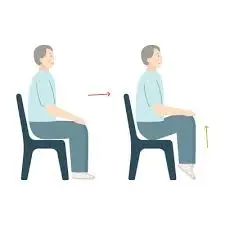
- When sitting straight in your chair, keep your feet hip-width apart.
- Next, raise your heels off the ground.
- Maintain this posture for a little while.
- Return your heels to the ground with caution.
- Then, return to your neutral position.
- Then relax.
- Do this five to 10 times.
Standing Calf Raises
- Start by standing comfortably on the ground.
- To maintain your equilibrium, rest your hands on your hips or grab onto anything considerable.
- While you lift your heels as high as you can, maintain your toes firmly planted on the ground.
- Maintain this posture for a little while.
- Then, return your heels to the ground.
- Then, return to your neutral position.
- Then relax.
- Do this five to 10 times.
Toe-Heel Walking

- By using this efficient method, you may strengthen the muscles and ligaments in your foot, ankles, and toes.
- Additionally, it strengthens stability.
- Five to ten rounds of toe walking can be easily finished in a single session.
- Walking on tiptoe helps to develop the balance muscles in the ankle joint.
- Then, return to your neutral position.
- Then relax.
- Do this five to 10 times.
Step Up (Bosu)
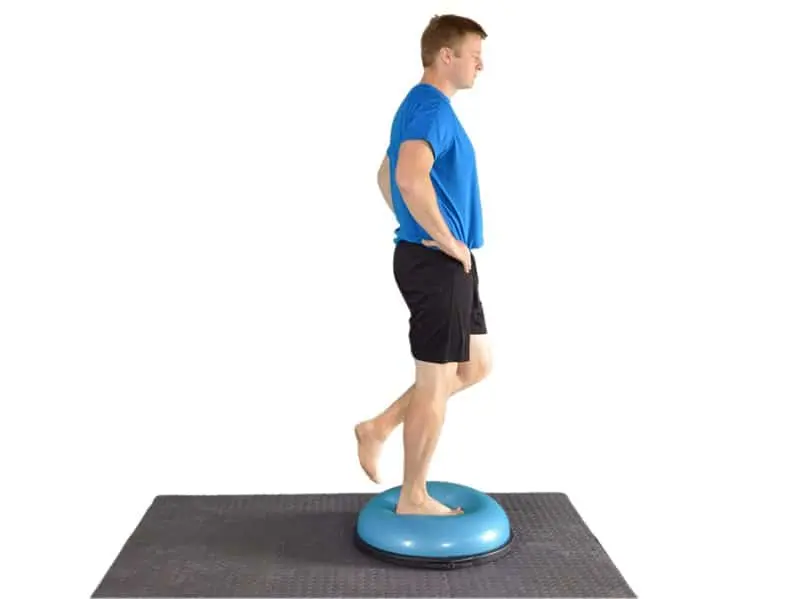
- Stand immediately behind the Bosu, with your feet shoulder-width apart.
- Place your right foot on the Bosu first, then your left, while maintaining a steady breathing pattern.
- For stability, the core has to be tightened.
- Slowly lower your right foot, followed by your left foot.
- Then, return to your neutral position.
- Then relax.
- This practice should be repeated 5 to 10 times.
- Start with the opposing foot this time, and repeat.
Standing Heel Raises
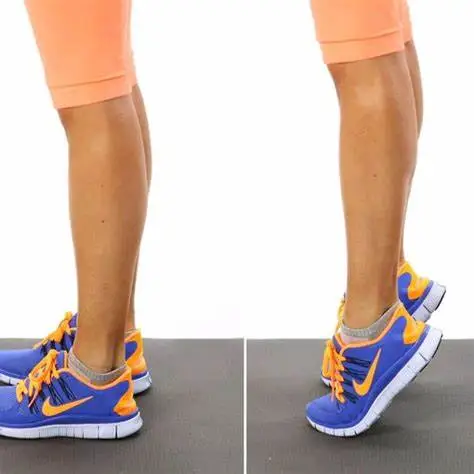
- Choose a spot where you can stand without any issues.
- If you need assistance, take a table or a chair.
- Now raise your heels.
- Maintain this posture for a little while.
- Then drop your heels.
- Then, return to your neutral position.
- Then relax.
- Repeat this exercise 5 to 10 times.
Ankle circle
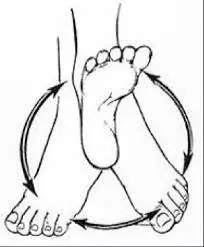
- Choose a comfortable place to sit on the ground first.
- Rotate your ankle carefully 10 times in both clockwise and anticlockwise directions.
- Move your foot and ankle lightly so as not to twist your entire leg.
- To add some variation, try using your big toe to circle the letters.
- Then, return to your neutral position.
- Then relax.
- Repeat this exercise 5 to 10 times.
Heel drops
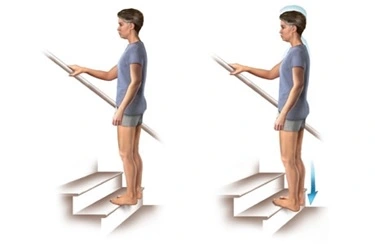
- Position your workout step against a wall.
- On the step, keep your feet at level and your upper body straight.
- As you glide toward the rear of the step, the heel of your right foot should rest on the step’s edge.
- Drop your right heel to the ground.
- For a few seconds, keep your right knee straight and feel pressure in your right leg.
- Then, return to your neutral position.
- Then relax.
- Repeat this exercise 5 to 10 times.
Lateral Ankle Sprain Taping
Surgical Treatment
Surgical Treatment for a Lateral Ankle Sprain:
Although surgery is not frequently used to treat lateral ankle strains, it may be suggested in extreme situations that cause ankle instability or in cases when conservative measures are ineffective. Your doctor can occasionally advise surgery to remove scar tissue or broken bone. Other surgical techniques could be required to rebuild or repair chronically injured ligaments in situations with recurring ankle sprains.
When to visit a doctor.
Rest, ice, and elevation are effective treatments for minor ankle sprains at home. However, if your ankle gets swollen and uncomfortable to walk on, see your doctor. During your visit, your doctor will ask about your injury, its symptoms, and the activities you participate in. During the physical exam, your doctor will push your ankle to determine which ligaments have been injured.
Your doctor may also want to perform an “ankle drawer test,” which includes moving your ankle in various positions to determine your range of motion. An x-ray may be ordered to look for shattered bones. Other imaging tests, such as a magnetic resonance imaging (MRI) test, may be conducted to establish the degree of damage to your ligaments or to check if there are other conditions.
What precautions should be taken when exercising?
- Stretching and warm-up are crucial before and after exercise.
- When exercising, make sure your posture is straight.
- Distribute your workouts with rest periods. Make gentle stretches. Stretching before and after sets, as well as completing the appropriate number of repetitions for every exercise, are all part of the practice.
- Avoid difficult activities.
- Wear loose-fitting, comfortable clothing so you can move freely and get the most out of your workout. Avoid wearing anything too tight or trendy.
- Avoid using any forceful or jerky movements when working out.
- Although it might be challenging, it is common and essential to stretch the tight muscles in your joints. Stretching and exercising shouldn’t hurt or make you feel like someone is stabbing you since they are unhealthy and aggravate your problem.
- If the pain becomes severe, immediately stop.
Recovery
The degree of a lateral ankle sprain will determine how long it takes to recover. However, it may take a few weeks to fully heal from even minor sprains. To make it easier for them to resume playing, athletes should collaborate with their physicians and physical therapists on a rehabilitation regimen. Athletes frequently use tape or a brace when they return to play to prevent future injuries to their ankles.
Risk Factors of Lateral Ankle Sprain:
This list is not all-inclusive. A lateral ankle sprain might be more likely to occur as a result of these circumstances. Not everyone who has these risk factors will experience symptoms.
- Past ankle injury: If earlier sprains are not properly treated, they can cause chronic ankle instability, which can increase your risk of getting sprains again.
- Inadequate balance and proprioception, or the sense of a joint’s location or movement.
- Uneven terrain makes it difficult for the foot and ankle to support and balance.
- Reduced fitness or sport-specific conditioning: Joints are more prone to injury when strength, endurance, and proprioception are compromised.
- The risk of suffering a lateral ankle sprain may be increased by wearing inappropriate footwear that provides inadequate support.
Prevention Methods For Lateral Ankle Sprain:
You should do the following to help prevent a lateral ankle sprain from happening again:
- Before and after participating in sporting events or physical activities, make sure you complete a thorough warm-up and cool-down.
- When going for a run, use appropriate running shoes or other footwear designed for your activity.
- If you have already experienced an ankle sprain, utilize protective gear like tape or a brace to give your ankle more support.
- Regularly engage in balancing exercises and stability training, such as yoga or mindfulness exercises, to improve proprioception and ankle stability in general.
- Make use of ankle joint strengthening exercises.
- Ensure that any rehabilitation techniques are carried out daily.
FAQs
What is the Healing period for a Lateral Ankle Sprain?
The length of time needed to recover from a lateral ankle sprain depends on how severe the injury is. More serious sprains may take six to twelve weeks to recover, although milder ones might repair in two to four weeks. ankle sprain treatment might speeds up healing and lower the chance of recurrent sprains.
With a lateral ankle injury, can I still exercise?
Since prolonged physical activity might complicate a sprained ankle, it is usually advised to rest and to prevent from placing weight on the affected ankle. To help you go back to your activities more quickly, Physiotherapy provides customized ankle sprain treatment that involves progressive exercises to safely rebuild strength and mobility.
How can I avoid lateral ankle sprains in the future?
Strengthening the ankle, using supportive shoes, and doing balance exercises are ways to avoid sprains in the future. Through a personalized ankle sprain treatment plan, working with a specialist, such as the staff at Physiotherapy, may help you develop ankle stability and resilience.
When should I get a lateral ankle sprain treated by a professional?
It’s advisable to get expert ankle sprain treatment , if you have unbearable pain, swelling, bruises, or are unable to bear weight on your ankle. Looking advice from experts at Physiotherapy may have a big impact on rehabilitation and long-term ankle health because untreated sprains can result in chronic instability and recurrent injuries.
Are your ankles better after walking?
Your everyday activities will be more stable if you strengthen your ankle, leg, and foot muscles and increase your cardiovascular fitness. Walking also maintains bone density, which is a benefit.
Is there any way to improve ankle stability?
To prevent or at least minimize the severity of ankle injuries, you may improve your coordination by simply standing on one leg and practicing your balance. For example, standing on one leg might be useful when cleaning your teeth, washing the dishes, or watching TV.
Referances
- Upswing Health. (2024, February 7). What is a Lateral Ankle Sprain & How Do You Treat It? – Upswing Health. https://upswinghealth.com. https://upswinghealth.com/conditions/ankle-sprain-lateral/
- Pure Physio + Sports. (2024, November 19). Lateral ankle sprain – pure physiotherapy. Pure Physiotherapy. https://purephysiotherapy.co.uk/conditions/lateral-ankle-sprain/
- Surdyka, M. (2023, December 12). Lateral ankle sprain rehab. E3 Rehab. https://e3rehab.com/lateral-ankle-sprain-rehab/
- Admin. (2024, November 6). Understanding lateral ankle sprain: causes, symptoms, and effective treatments – BSI Physiotherapy. BSI Physiotherapy. https://www.bsiphysiotherapy.com/lateral-ankle-sprain-guide/
- Bariya, D. (2025, March 5). 16 Best Ankle Stability Exercises – Physical therapy. Physical Therapy Treatment and Exercise. https://physical-therapy.us/ankle-stability-exercises/

